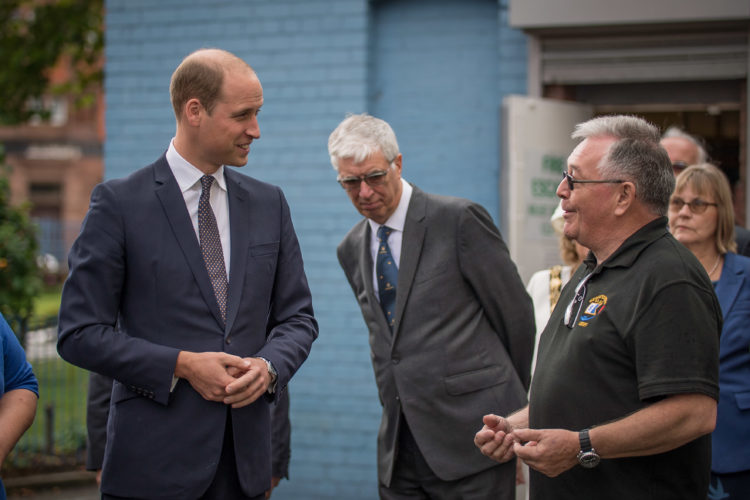Divers’ daring mission to rescue a piece of maritime history from the bottom of Liverpool Bay
Scuba diver Geoff Oldfield from Moreton tells Prince William how he and his diving colleagues recovered a cannon from a wreck that sank in Liverpool Bay way back in 1883. Tony McDonough reports

In 1869 the passenger vessel SS City of Brussels was launched and shortly afterwards crossed the Atlantic in seven days, 20 hours and 33 minutes – setting a new record.
However, less than 14 years later, it lay at the bottom of Liverpool Bay having sank after colliding with the cargo vessel Kirby Hall, which was en route from Glasgow to Bombay.
The January 1883 incident, which occurred in thick fog, claimed the lives of 10 of the 167 souls on board SS City of Brussels, which was nearing the end of a voyage from New York to Liverpool.
Kirby Hall had smashed into the starboard side of the Inman Line ship, almost cutting it in two.
And there it lay for more than a century until the wreck was discovered in 1984 and became a popular destination for scuba divers.

Daring mission
But it wasn’t until 1998 that Geoff Oldfield and his fellow members of the Merseyside branch of the British Sub-Aqua Club (BSAC) discovered there was two rusting cannons on board the SS City of Brussels, one of which they were determined to recover.
Last week Geoff, who has been diving for 43 years, told the story of their daring mission to Prince William, the Duke of Cambridge, when he visited the BSAC clubhouse and training pool at Seacombe in Wallasey.
“He was impressed at how we had managed to do five dives in 45 minutes to raise the cannon. I also talked to him about the wreck itself and explained how 10 people lost their lives, when the ship sunk,” said Geoff who lives in Moreton in Wirral.
Major operation
Describing the salvage operation, involving a 14-strong team, Geoff added: “It was one of our most popular wrecks to dive in Liverpool Bay because it was so substantial. We’ve been diving it for decades.
“One of my colleagues mentioned that they had seen a cannon and we were really keen to recover it but knew this was going to be a big task.
“We also needed to learn how to conserve and preserve the cannon if we managed to recover it. We knew if we didn’t do anything it was quickly going to crumble into dust because it was made of cast iron.
“We approached Merseyside Maritime Museum for help and they were only too pleased to show us about electrolysis and conservation.”
Strong tides
The biggest challenge the divers faced was the strong tidal movement in Liverpool Bay.
Geoff explained: “You probably get about an hour of still water here so we had to get it done very quickly.
“When you think of the amount of tasks we had to do and the fact there was five separate dives, to complete the lift in 45 minutes was beyond our wildest dreams.
“We did the dive in March 1998 and I remember it was very calm with good visibility. They were perfect conditions.
“Once we’d recovered the cannon it took us six hours to tow it back to New Brighton. We’d come back in with the tide and were in darkness by the end of it. It was a long day.

“The wreck is very special to scuba divers of the North West so recovering the cannon is something we’re very proud of.
“It was a really good expedition and afterwards we made sure we declared the cannon to The MCA Receiver of Wrecks.”
Preservation process
Work then began on trying to conserve the cannon – a process which took more than six years to complete.
Geoff adde: “A special tank was built for the cannon but unfortunately as it was made out of steel originally it corroded due to the electrolysis and sprang a leak.
The tank was then lined with fibreglass and the electrolysis continued for a little over a year. Then the cannon was flushed with fresh water regularly for a further five years. It was a long process.

“It is now on display in our boathouse and although it isn’t in pristine condition it’s much better than it would have been if it had been left on the wreck or left untreated.
“It’s a constant reminder of that important Mersey Divers expedition and it was a pleasure to share it with The Duke of Cambridge.”
BSAC represents more than 28,000 scuba divers and snorkellers and welcomes new members from complete beginners upwards including those who have trained with other agencies.
Mersey Divers was the fifth branch club of BSAC to be founded – in 1954. For more information about Mersey Divers go to www.merseydivers.com
